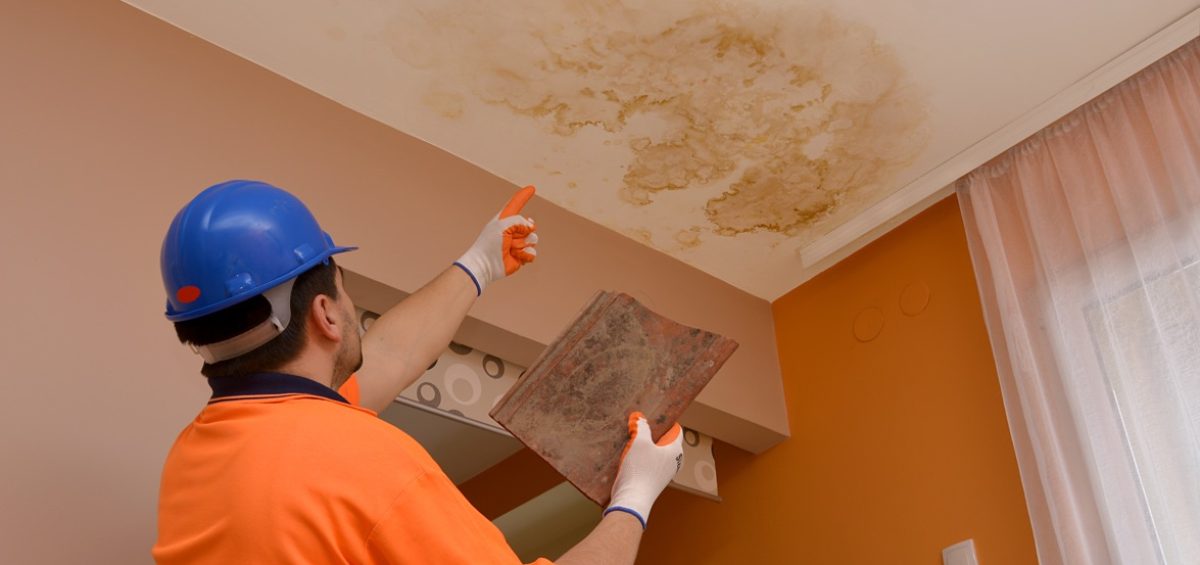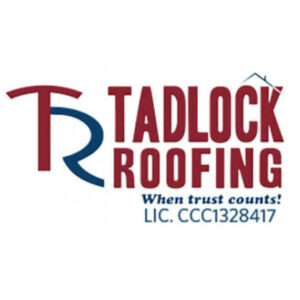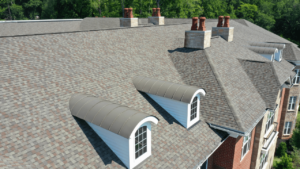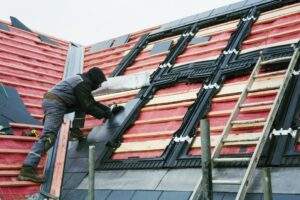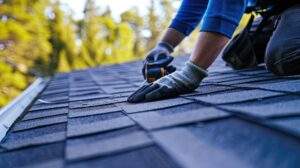Key Takeaways:
• Water stains on ceilings often indicate roof leaks or attic moisture issues
• Poor attic insulation can lead to condensation buildup and stains
• Plumbing leaks in upstairs bathrooms are a hidden culprit
• Timely inspections prevent mold, structural damage, and high repair costs
• Tadlock Roofing offers expert inspections and leak repairs across Florida
Noticed a brown spot or mysterious ring on your ceiling? Don’t ignore it. In Florida’s hot, humid, and storm-prone climate, water stains on the ceiling are more than just cosmetic issues—they’re early warning signs of potentially serious problems lurking overhead. Here are the top causes of ceiling stains, how to identify them, and when to call in the experts at Tadlock Roofing.
Causes of Water Stains on Ceiling: Roof Leaks After Storms
One of the most common reasons for ceiling stains? Roof leaks. Heavy rain, strong winds, and hurricane conditions can loosen shingles or damage flashing. Improperly installed roof flashing or roofing material can also allow water to enter after storms. When this happens, water can enter through your roof deck and soak your insulation and drywall before finally showing up as a stain.
Damage to the flashing roof, especially to critical roof flashing components, can lead to leaks and water stains inside your home. The type and condition of your roofing material also impacts how vulnerable your roof is to leaks after storms.
Schedule a roof inspection after storms. It’s the fastest way to catch damage before it spreads.
1. Identifying Leaks
Spotting the source of ceiling water stains early can save you from costly repairs down the road. Start by examining the ceiling for telltale signs like dried and discolored deposits, peeling paint, or a persistent water stain. Pay close attention to areas around air vents, plumbing vents, and skylights—these are common trouble spots for a leaky roof or faulty plumbing.
Look for excess moisture or water spots, which may indicate a hidden leak. Mineral deposits or a musty smell can also signal water damage lurking above your ceiling. For a more thorough check, use moisture meters to detect dampness that isn’t visible to the naked eye. If you’re unsure about the root cause, scheduling a free roof inspection can help pinpoint whether the issue is with your roof, plumbing, or another source. Early identification is key to stopping leaks before they cause major damage to your ceiling and home.
2. Damaged or Missing Shingles
Shingles are your roof’s first line of defense. If they crack, curl, or go missing, your roof becomes vulnerable to water intrusion. Over time, that water finds its way down into your ceiling. Florida’s high heat and UV exposure can wear shingles out faster than expected. Roof damage can also occur from foot traffic or impact, which can compromise the roofing material. Additionally, the type of roofing material used can affect how quickly shingles wear out or become damaged.
3. Poor Attic Ventilation or Insulation
Condensation can be just as damaging as a leak. Improper airflow or insufficient insulation in your attic can trap heat and moisture. This moisture condenses on rafters and seeps downward, mimicking a roof leak. Condensation can create a wet spot on the ceiling, especially in areas like the laundry room where humidity is high. It can also contribute to mold and mildew.
4. Plumbing Leaks from Above
Stains in the ceiling beneath bathrooms? Suspect your plumbing. Plumbing issues such as bad piping, leaking pipes, or pipe related leaks can all contribute to ceiling stains. Leaky pipes, loose fittings, overflowing tubs, or a plumbing leak from drain pipes in bathrooms or kitchens can lead to hidden water accumulation between floors. Sometimes, a plumbing leak or pipe leak may not be obvious, as liquid seeps into the ceiling material and leaves stains. Eventually, this creates dark, expanding stains on your ceiling. It’s crucial to identify the underlying cause and address any underlying issues before making repairs.
Pro tip: While a roofer isn’t your first call here, we can rule out roof-related causes quickly.
5. Clogged Gutters or Downspouts
Water has to go somewhere. If gutters overflow, it often ends up inside. Improper drainage, including from improperly installed gutters or downspouts, allows rainwater to back up under your roofline, especially at the eaves. From there, it seeps into your walls and ceilings. This can result in water leaks and subsequent ceiling stains.
6. Flashing Failures
Flashing keeps water out at roof joints and penetrations. Over time, flashing can corrode, suffer mechanical damage, or shift out of place, creating vulnerabilities where water enters. Common trouble spots include chimneys, skylights, and vents. These features are part of a vast system of roof penetrations, and leaking skylights are a common issue. Mechanical damage to flashing can result in leaking and water intrusion.
7. Damaged Waterproofing Repair
When waterproofing layers fail, water can easily seep through and leave unsightly ceiling stains. The first step in repairing damaged waterproofing is to locate the source of the leak and assess how far the water damage has spread. Remove any wet or damaged materials, such as ceiling tiles or drywall, and allow the affected area to dry completely to prevent mold growth.
Once the area is dry, apply a new waterproofing layer, making sure it’s properly sealed and flashed around vents and skylights to block future leaks. To fix ceiling stains left behind, use a stain-blocking primer before applying fresh ceiling paint. This will help cover water stains and prevent them from bleeding through the new paint. Regular maintenance and inspections are essential to catch damaged waterproofing early and keep your ceiling looking its best.
8. HVAC and Ductwork Issues
Poorly insulated ductwork, malfunctioning AC units, and leaking HVAC systems or HVAC units can cause leaks. HVAC systems and HVAC units, including the HVAC system as a whole, can develop leaks that result in water stains on ceilings. In particular, a leaking HVAC unit or clogged drain lines can cause water spots to appear. In Florida’s heat, cold AC lines can condense moisture rapidly. If these systems run through your attic or ceiling, pooled condensation may appear as water spots. Leaks from a heating appliance can also result in ceiling stains.
A licensed HVAC contractor can diagnose system-related leaks, but Tadlock can confirm whether the roof played a role.
9. Preventing Water Damage
Taking proactive steps to prevent water damage is the best way to avoid ceiling stains and expensive repairs. Start by ensuring your home has proper ventilation, especially in moisture-prone areas like bathrooms and kitchens. Install exhaust fans and use dehumidifiers to control excess moisture and reduce the risk of leaks.
Regularly inspect plumbing fixtures and pipes for any signs of leaks or wear, and address issues as soon as they arise. Keep gutters and downspouts clear to direct water away from your roof and foundation. Consider adding a waterproofing layer to your roof and make sure all flashing is secure and sealed. By staying on top of maintenance and addressing small problems quickly, you can protect your ceiling from water damage and keep your home safe and dry.
10. Ceiling Stain Prevention
Preventing ceiling stains starts with regular care and attention. Schedule routine roof inspections and repairs to catch leaks before they start. Keep plumbing fixtures and pipes in good working order, and fix any leaks right away to stop water stains from forming.
For added protection, use a stain-blocking primer on your ceiling, especially in areas prone to moisture. Proper ventilation is key—install exhaust fans and use dehumidifiers to keep excess moisture at bay. Inspect your ceiling regularly for early signs of water damage or stains, and address any issues promptly. If your ceiling tiles are old or damaged, consider replacing them with new ceiling tiles or adding a waterproofing layer to prevent future stains. Staying proactive is the best way to keep your ceiling looking clean and fresh.
11. Importance of Regular Inspections
Regular inspections are your best defense against water stains, mold growth, and costly repairs. By scheduling thorough inspections with a professional, you can catch leaks, damaged waterproofing, or faulty plumbing before they escalate into major water damage.
A detailed inspection will also highlight areas with excess moisture or poor ventilation, allowing you to install exhaust fans or dehumidifiers as needed. Prioritizing regular check-ups helps you address small issues early, prevent mold growth, and maintain the long-term health of your ceiling. Don’t wait for a stain to appear—make inspections part of your home maintenance routine to protect your investment and your peace of mind.
Protect Your Home: What to Do When You Spot a Ceiling Stain
Water stains on ceilings require immediate attention to prevent further damage. Water stains are often just the visible part of a larger issue. Here’s what you should do immediately:
-
Document the size, location, and color of the stain
-
Check your attic for damp insulation or wet rafters
-
Note if the stain appears after rain
-
Assess the affected layer and stained area for damage
-
Schedule a professional inspection with a roofing expert
After these steps, obtain repair estimates from professionals to fix water stains and address the causes of water stains.
Book your free roof inspection with Tadlock Roofing to get peace of mind and stop damage before it spreads. A professional can help identify the cause of the stain on the ceiling and recommend the best way to fix water stains.
Trusted by Florida Homeowners for Over 40 Years
At Tadlock Roofing, we’ve helped thousands of Florida families deal with ceiling stains, storm damage, and roof leaks since 1980. As a GAF Master Elite and Owens Corning Platinum Preferred contractor, we offer:
-
Emergency tarping and leak repair
-
Free inspections and consultations
-
Financing options for eligible homeowners
-
Manufacturer-certified warranties up to 50 years
Let us help you tackle everything on your to do list related to roof and ceiling repairs.
We proudly serve communities across Tallahassee, Tampa, Sarasota, and beyond.
Don’t wait. If you see a water stain on your ceiling, it’s time to act. Call Tadlock Roofing at (855) 964-7663 or schedule your free inspection today.
Frequently Asked Questions
What do water stains on a ceiling usually mean?
Water stains on ceilings often indicate an underlying issue such as roof damage, a leaking roof, or a plumbing problem. These stains mean that water leaks are infiltrating your ceiling materials, and it’s critical to identify and address the underlying issue promptly to prevent further damage.
Are water stains on the ceiling dangerous?
Yes. Water leaks that cause water stains on ceilings may lead to mold growth, structural damage, or even electrical damage if water reaches wiring. It’s important to investigate and resolve the underlying issue quickly to avoid more severe problems.
Can a roof leak cause a ceiling to collapse?
If left unchecked, prolonged water intrusion from a leaking roof or other water leaks can weaken structural elements and lead to ceiling collapse, especially if insulation becomes waterlogged.
Do I need a roofer or a plumber for a ceiling water stain?
If the stain is under a roof area or appears after rain, call a roofer first to check for roof damage or a leaking roof. If it’s under a bathroom or plumbing fixture, start with a plumber—but a roofer can help rule out roof-related issues. Identifying the underlying issue is essential to prevent further water leaks and damage.
How much does it cost to repair a ceiling stain?
The cost varies depending on the underlying issue. A small water leak fix may cost a few hundred dollars, while more extensive damage requiring roof and drywall repair can cost more. Tadlock Roofing provides free inspections to help identify the root cause.


